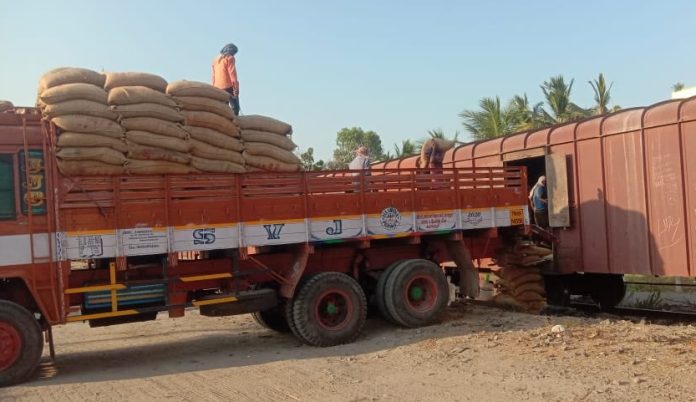By Arun Kumar Shrivastav
Recently, the Indian government’s Department of Consumer Affairs announced that 1600 metric tons of onions procured by the National Cooperative Consumers Federation of India Ltd was shipped by the railway from Nashik to Delhi. The quantity of 42 BCN (Bogie Covered New) was enough to fill 53 trucks. The initiative was taken under the price stabilisation fund, and it’s the first time that onions were transported in bulk by railway under this programme. The shipment was expected to reach Delhi on October 20 and be released in Delhi-NCR, increasing the availability of onions in the market and stabilising the price in the festive season.
At a press conference, Nidhi Khare, Secretary of the Department of Consumer Affairs, said that more destinations would be added for onion transportation through railways to ensure a fast supply of the commodity to different parts of the country. After Delhi, Lucknow, and Varanasi would get the supply of onions through railways, she informed.
The department has also asked the railways to provide railway rakes for transportation of onions to multiple locations across the Northeast regions, including New Jalpaiguri, Dibrugarh, New Tinsukia, and Changsari. This will ensure that onions are available at reasonable prices across India.
The latest initiative to use railways to transport agricultural products follows the government’s ambitious Kisan Rail project, which was folded after running for two years due to poor business volume.
Meanwhile, a similar initiative in Bangladesh has produced laughable results. On the first day of its run, a special train to transport agricultural products amid rising food prices in the country departed with a meagre 640 kilograms of goods. At some stretches, it carried just 100 kilograms of pointed gourd and okra against a capacity of 120 tonnes.
A unique agricultural train departed Khulna Railway Station at 10:15 am, stopping in Jashore at around 11:55 am and Chuadanga at 2:00 pm. Starting immediately, the train will run every Tuesday from Khulna, every Thursday from Panchagarh, and every Saturday from Chapainawabganj, transporting agricultural goods to Dhaka. The seven-coach train, dedicated to carrying vegetables, will arrive at Dhaka’s Airport, Tejgaon, and Kamalapur stations at around 10:00 pm.
According to a local news report, the cost of transporting vegetables and agricultural products via the new train service will range from Tk1.08 to Tk1.47 per kg. Encouraging farmers and traders to take advantage of this cost-effective option, officials noted that goods can be purchased from the train in Dhaka for Tk1.4 per kg. Jashore Railway Station Master Aynal Hasan also mentioned that a large-scale campaign was launched to inform local businesses about the service, highlighting its affordability and convenience.
While the use of railways for the transportation of agricultural goods is low and discouraging, environmentalists are increasingly stressing the decarbonisation of the transport sector and building a pathway for a sustainable mobility network.
A recent discussion at the Centre for Science and Environment (CSE) emphasised that private transport will take over the share of public transport mode by 2040 unless interventions are made immediately. The transport sector is one of the largest contributors to India’s greenhouse gas emissions and needs urgent decarbonisation. It’s possible only by strengthening the public transport network. Focusing solely on replacing fossil fuel-powered vehicles with electric ones is not a sufficient solution. Mobility experts believe there is an urgent need to reduce the carbon footprints of transport, which causes air pollution and health hazards, including cancer.
“Vehicular emission is a major health hazard. The toxic gases released by cars, buses and trucks have been associated with a host of ailments, ranging from respiratory to cardiovascular, and even cancer,” an environment and policy specialist said at the CSE discussion.
Black carbon, a vehicle exhaust particulate matter, is carcinogenic and contributes to global warming. Diesel particulate matter (PM), a rich source of black carbon, accounts for only 8% of outdoor PM, but a report by the California Air Resources Board said 70% of known cancer risk is attributable to toxic air contaminants.
Air pollution levels are significantly higher near highways compared to urban background concentrations, mainly due to the presence of diesel buses and trucks. Another expert said transparency in data will be crucial to promoting sustainability in the transport sector.
India’s emerging national strategy for decarbonising the transport sector aims to align with its Nationally Determined Contributions (NDCs). Despite buses being a key element of public transport, ridership in India has been declining. Globally, electric mobility is one of the most effective solutions for decarbonising transport. However, India has encountered challenges in scaling up electric vehicle adoption. (IPA Service)


